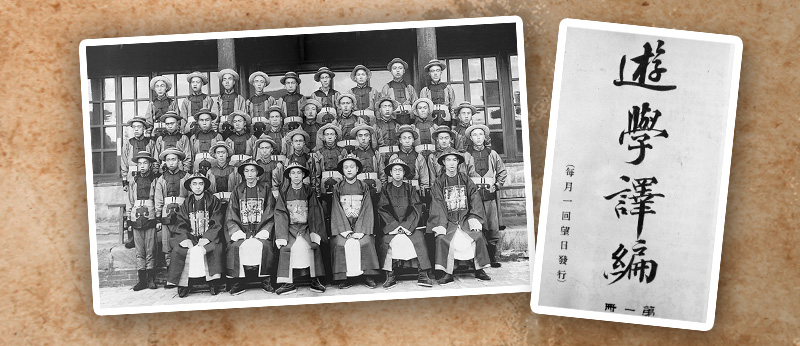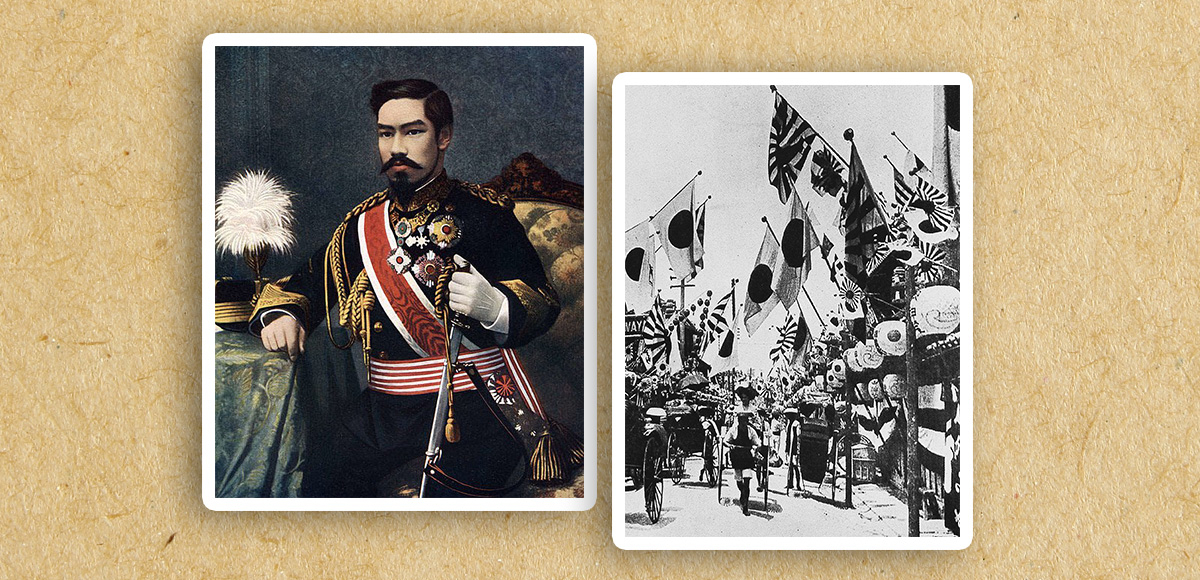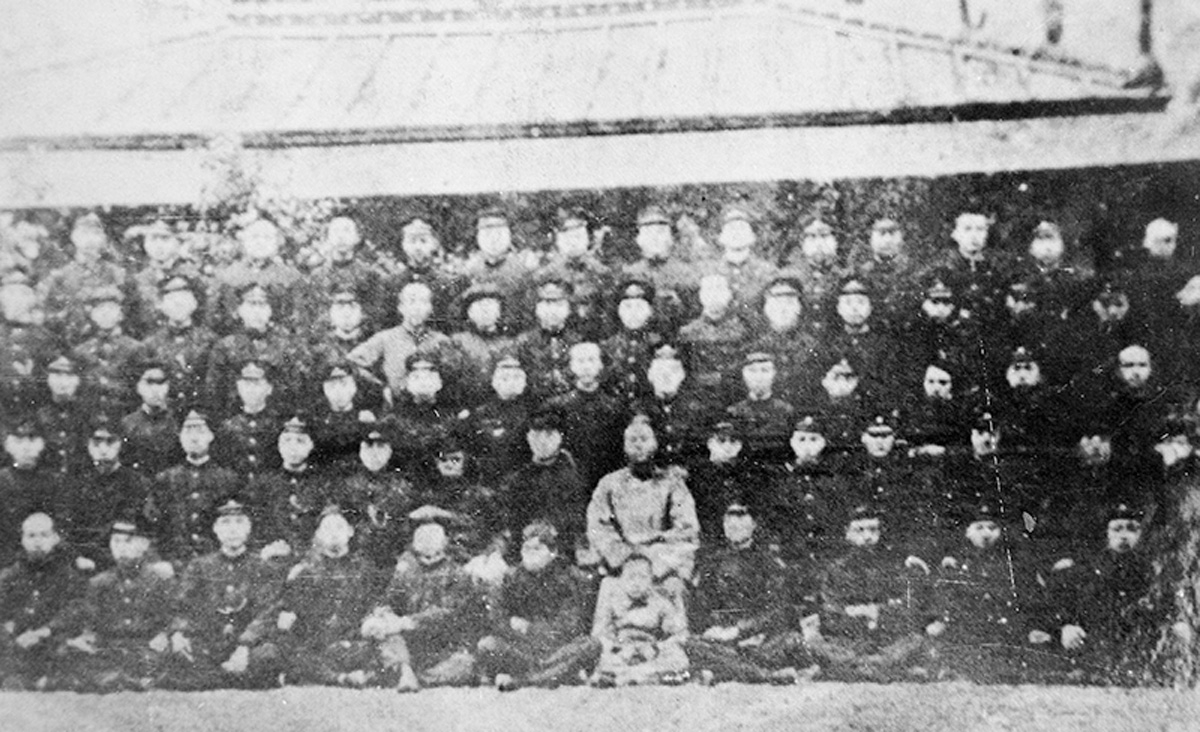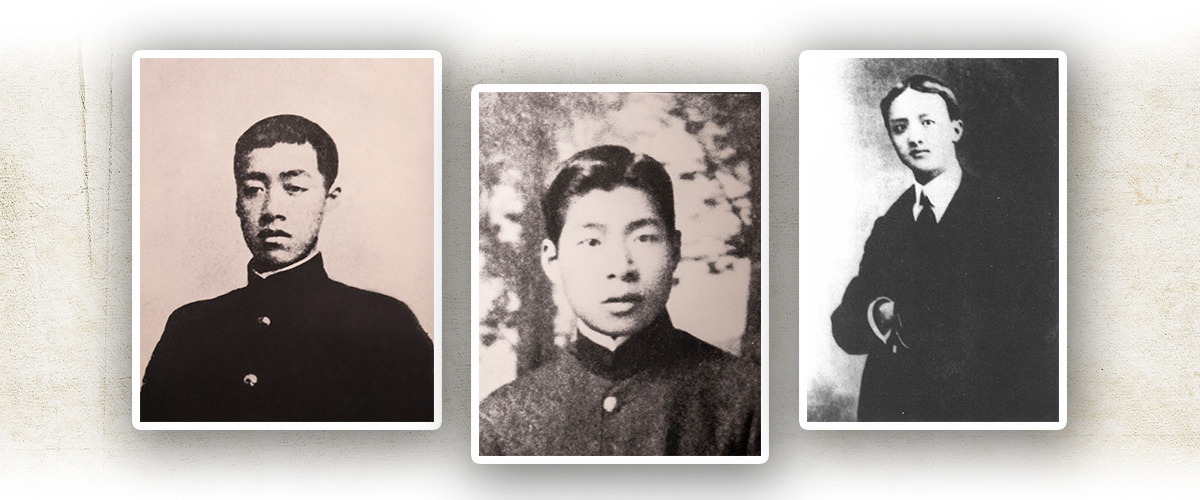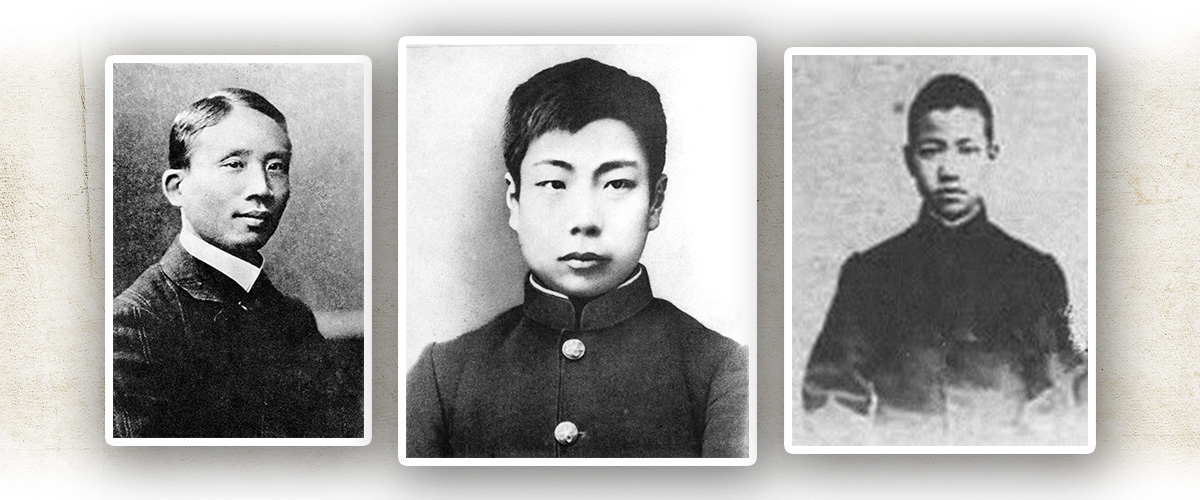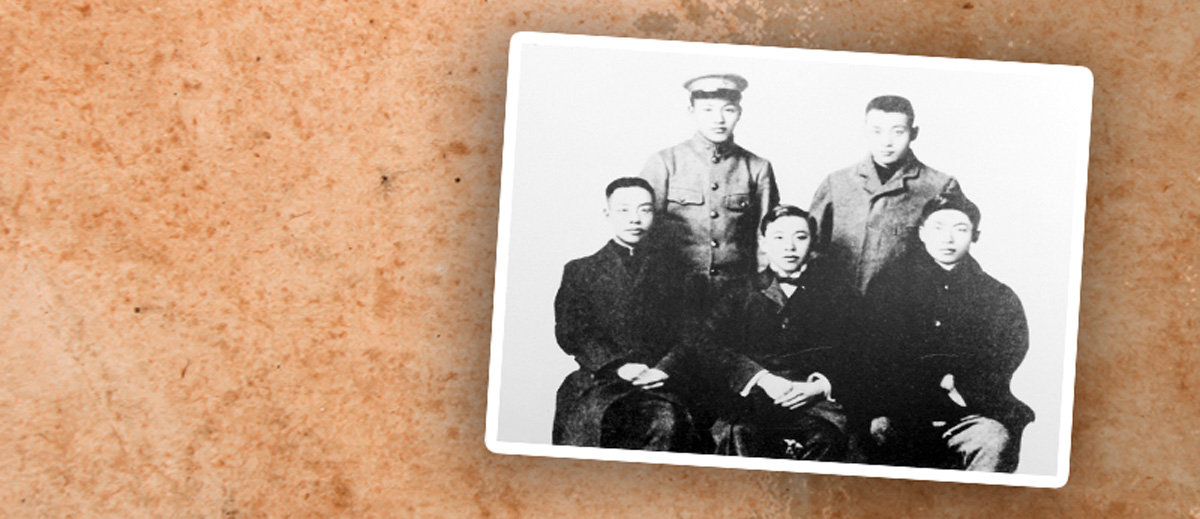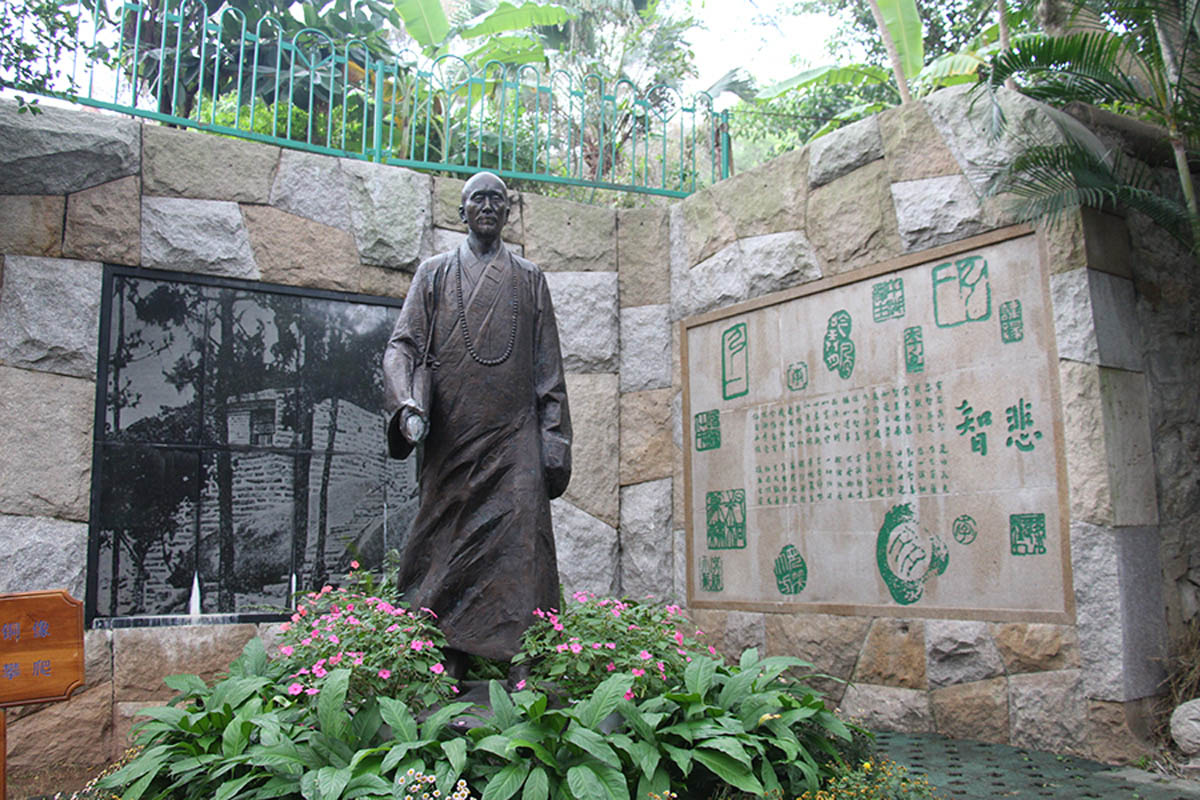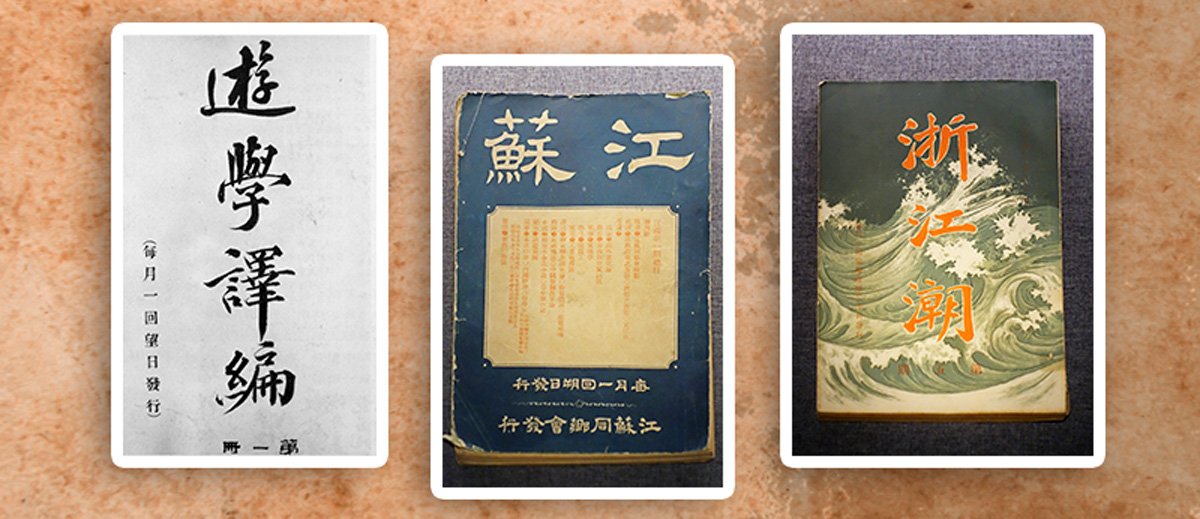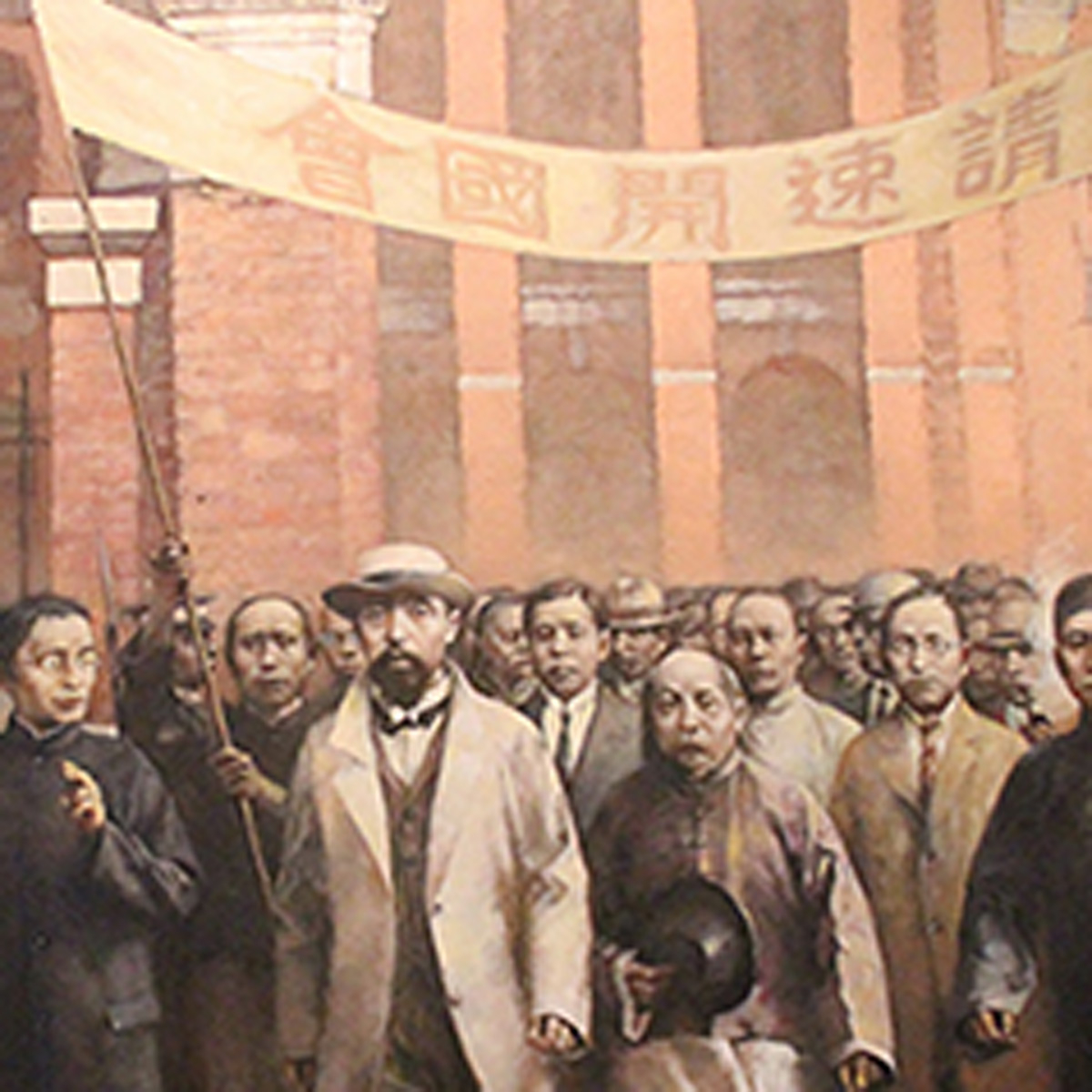China’s current massive movement to study abroad began in the Self-strengthening Movement (洋務運動), but initially the destinations were limited to European countries and the United States. By the late Qing era, post-Meiji Restoration Japan emerged as a new study abroad destination for Chinese students. At that time, the Qing government believed that funding students to study abroad was as important as establishing new schools and abolishing the imperial examination system. Consequently, it ordered all provinces to raise the necessary funds to send handpicked students abroad to study. In October 1902 and October 1906, the Qing government dispatched chief supervisors to Japan and Europe respectively to learn about their institutions.
In October 1903, the Qing government issued the Regulations Governing Awards for Graduates of Overseas Study Programmes (《獎勵游學畢業生章程》) which stipulated that those who were able to complete a typical five-year ordinary middle school programme in Japan and graduate with distinction would be awarded the rank of bagong (拔貢, rank awarded by the traditional imperial examination system); those able to complete a three-year programme and graduate with distinction from a higher middle school directly managed by the Japanese Department of Education or from any specialised school at an equivalent level would be awarded the rank of juren (舉人, an imperial examination rank above bagong). Those who were able to graduate from a university with a specialised division or ordinary diploma would be awarded the rank of jinshi (進士, the highest rank granted by the imperial examination). Also, those who were able to complete a three-year programme at an imperial university or equivalent institution and receive a bachelor degree upon graduation would be granted the rank of hanlin (翰林, prestigious title granted to outstanding jinshi). Those who were able to complete a five-year programme at a graduate school of an imperial university and were conferred a doctorate degree would be granted the distinguished title of hanlin shengjie (翰林升階, the rank above hanlin).
Studying in Japan became increasingly popular with Chinese students partly because of Japan’s success in emulating the West and partly because Japan’s culture was relatively similar to that of China. In practical terms, it was a more economical option compared with studying in European countries or the United States. Between 1905 and 1906, more than 8,000 government-funded and self-funded Chinese students studied in Japan. By 1907, the number reached 15,000. This played an important role in the Late Qing Reform’s attempt to establish a constitutional monarchy and in the revolutionary movements to come.
|
|
Why did the growing trend of studying in Japan have a significant impact on China? |
|
|
See answer below. |
A portrait of Emperor Meiji and a photo of the Japanese people celebrating their country’s victory in the Russo-Japanese War. The Meiji Restoration’s achievements inspired China to see Japan as a model of reform during the late Qing dynasty. Japan’s apparent success with the Meiji Restoration, its relatively lower living expenses for foreign students, and its cultural similarity to China made it an ideal destination for a burgeoning number of Chinese students opting for overseas studies.
A group photo of the Japan-bound students attending Shanxi Grand School (山西大學堂). Among the late Qing dynasty’s sweeping education reforms was the promotion of overseas study. Many Chinese students who studied abroad later became notable figures in their respective fields.
A group photo taken in 1902 of Hunan (湖南) students attending Lianghu Academy (兩湖書院) in Hubei Province (湖北). They were selected to study in Japan on government scholarships. The first figure from the right in the front row is Huang Xing (黃興), who would eventually become a revolutionary leader and one of the founding fathers of the Republic of China.
Inspired by new ideologies, many Chinese students in Japan participated in the anti-Qing revolution. Pictured are three of the 72 revolutionary martyrs of Huanghuagang (黃花崗七十二烈士). From the left: Lin Juemin (林覺民), Fang Shengdong (方聲洞), and Yu Peilun (喻培倫). They all studied in Japan in the late Qing era.
From the left: Cai Yuanpei (蔡元培) studied in Germany during the late Qing dynasty; Lu Xun (魯迅) in Japan, and Chen Yinke (陳寅恪) in Japan. While Japan was the most popular destination, some students preferred studying in Europe or the United States.
During the late Qing dynasty, the United States returned part of the Boxer Rebellion Indemnity (庚子賠款) it had received under the Boxer Protocol (《辛丑條約》) for promoting education in China. Among various measures, it offered financial support to Chinese students to study in the United States. Pictured is a group photo of the second group of Boxer Indemnity students bound for the United States taken in Beijing in 1910. The first figure from the left in the third row is Hu Shi (胡適).
Many Chinese students took up military studies in Japan. Pictured is a photo of the students attending Tokyo Shinbu Gakkō, a military preparatory school. On the left in the back row is Chiang Kai-shek (蔣介石).
A bronze sculpture of Master Hong Yi (弘一法師). Known as Li Shutong (李叔同) before becoming a monk, the master was a renowned musician, painter, calligrapher, and dramatist. He studied in Japan from 1905 to 1910.
Chinese students studying abroad were not only engrossed in their studies, but they also actively participated in social activities. Pictured are three journals published by them to disseminate new knowledge in China. From the left: Overseas Study and Translation (《遊學譯編》) first published in 1902; Jiangsu (《江蘇》) first published in 1903; and Zhejiang Tide (《浙江潮》) first published in 1903.
The study abroad trend persisted until the Republican era. Pictured are members of the Divine Land Academic Society (神州學會) in 1914, a revolutionary group founded by Chinese students in Japan. The group organised anti-Yuan Shikai activities. Li Dazhao (李大釗) is the third figure from the right in the front row.
|
|
Why did the growing trend of studying in Japan have a significant impact on China? |
|
|
Since the mid-Qing dynasty, both China and Japan were subjected to western invasions and strove to make themselves stronger and more prosperous through reform movements. Besides familiarising themselves with the advanced aspects of Western civilisation, Japan also learnt from Chinese works such as the Illustrated Treatise on the Maritime Kingdoms (《海國圖志》) authored by Wei Yuan (魏源). Japan’s willingness to embrace new knowledge propelled the Meiji Restoration to succeed, while China’s own Self-strengthening Movement floundered. As the world began to see Japan in a new light for its achievements, more Chinese students opted to study in Japan during the late Qing era. As foreign students, they were exposed to all kinds of new concepts - from democracy and liberty to constitutional reform, economic development, military training, culture, education, and health science. As returnees, they provided China with the talents it needed for its impending revolutionary movement and later development. Many Chinese who studied or undertook other activities in Japan later became renowned social reformers or leading figures in China’s literary, historical, and artistic fields. They included Kang Youwei (康有為), Liang Qichao (梁啟超), Sun Yat-sen (孫中山), Huang Xing, Zhang Shizhao (章士釗), Qiu Jin (秋瑾), Chen Tianhua (陳天華), Zou Rong (鄒容), Cai E (蔡鍔), Chiang Kai-shek, Wang Jingwei (汪精衛), Yan Xishan (閻錫山), Liao Zhongkai (廖仲愷), He Xiangning (何香凝), Chen Duxiu (陳獨秀), Wang Guowei (王國維), Chen Yinke (陳寅恪), Lu Xun, Zhou Zuoren (周作人), and Li Shutong. The trend of studying in Japan continued well into the Republican era. Notable figures who studied in Japan during that later period included Li Dazhao, Dong Biwu (董必武), Yu Dafu (郁達夫), Guo Moruo (郭沫若), Tian Han (田漢), Zhou Enlai (周恩來), Feng Zikai (豐子愷), Nie Er (聶耳), and Zhang Wentian (張聞天). The influence of the Japanese experience that spanned decades had a profound impact on China. |
Source of most photos used in this feature piece: Fotoe




